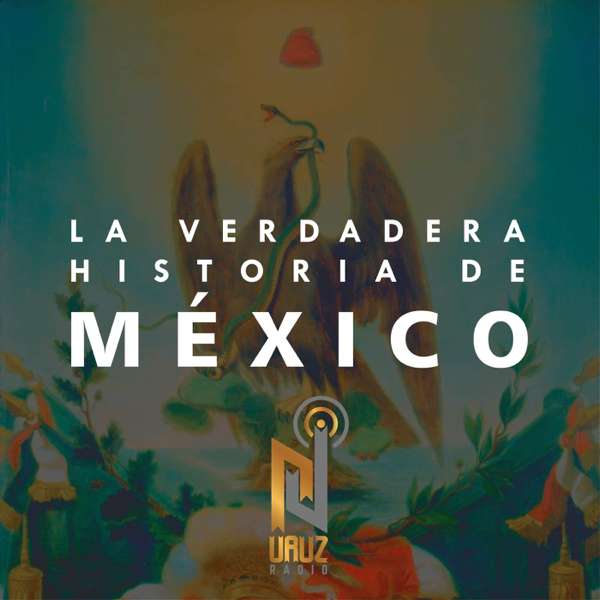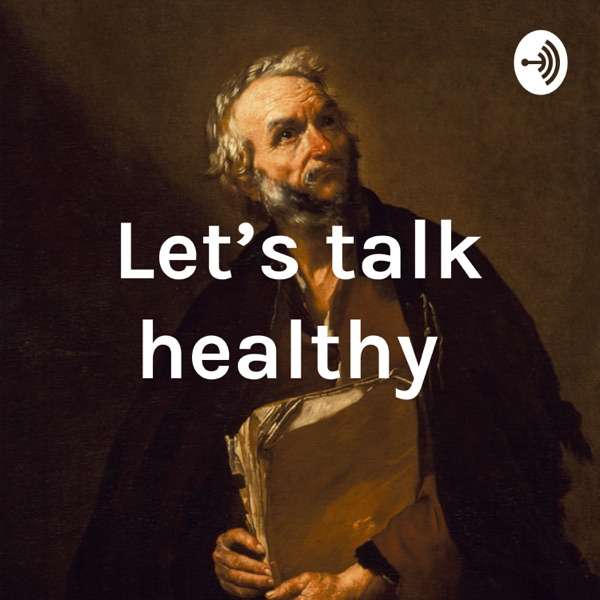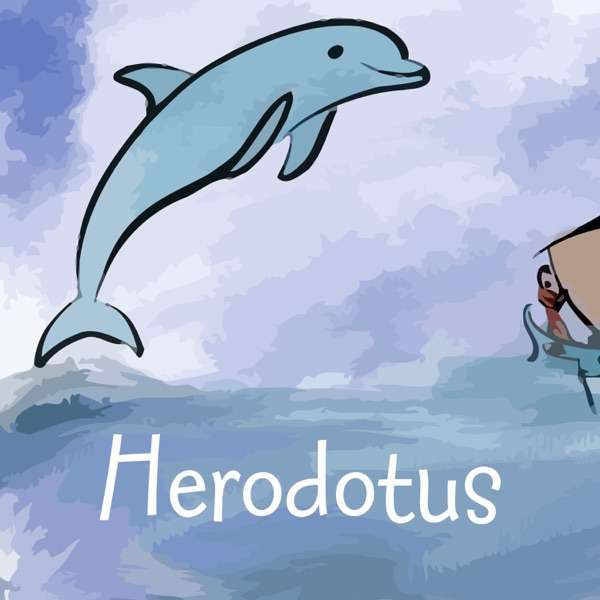PART 4
The people of Tenochtitlan were starting to feel the effects of a virus that had only recently been introduced to the population. And it has to be considered one of the major contributing factors that led to the fall of the city. Here, I’ll quote from Miguel Leon Portilla’s translation of an Aztec account of Tenochtitlan suffering smallpox:
“It lasted for seventy days, striking everywhere in the city and killing a vast number of our people. Sores erupted on our faces, our breasts, our bellies. No one could walk or move. The sick were so utterly helpless they could only lie on their beds like corpses, unable to move their limbs or even their heads. They could not lie face down or roll from one side to the other. If they did move, they screamed with pain.” At first they cremated the bodies. Later on, so many people died that they gave up and just dumped them in the lake. When women contracted the disease, they got too sick to grind corn and cook, resulting in a severe food shortage. The emperor, Cuitlahuac, also grew ill.
The Aztecs had no knowledge of smallpox and, unlike the Spanish, no immunity against it. Their desperate remedies did nothing to stop the spread of what they called The Great Rash. They covered the wounds with obsidian powder and wrapped them in casts. To stop nosebleeds they put stones into nostrils. One remedy actually made things much worse. Steam baths, usually a treatment for sickness, were the perfect medium for passing the disease. I mean think about it: a dark, hot, wet environment. If you wanted to engineer the perfect smallpox-spreading weapon, you would just put people inside a big sauna for a couple minutes.
The virus made people so weak that they couldn’t get up to look for food, so they died of hunger in their beds. Many of those who survived were left paralyzed and blinded. The emperor Cuitlahuac died of smallpox on December 4, 1520.
Some estimates claim that half the city died. In the 16TH century alone (according to an estimate in Charles C Mann’s book 1491) as many as 100 million natives in the Americas may have died, from disease alone. To put that in other terms, it was roughly one in every five people on Earth.
Remember that Tenochtitlan at that time (as well as today) was one of the largest cities in the world. And activity there ground to a halt with so many infected. And that was just inside the metropolis. It also brought down the kings of nearby regions called Chalco, Cholula, and Tacuba. The Spanish, meanwhile, were all but immune to it, most of them were exposed to it as kids.
CORTES ON THE THRONE
Enjoying his new found position of power over a mostly leaderless region, Cortes took time to write new legal documents solidifying his authority over Mexico (at least according to Spanish law). He wrote letters to King Carlos of Spain in an effort to preempt any legal actions against him (by, for example, Diego Velazquez, his direct superior).
Cortes even suggested a name for the landmass. He called it, redundantly, New Spain of the Ocean Sea. (Maybe “New Spain of the Ocean” was already taken.) He sent ships to procure supplies from Jamaica and the Dominican Republic. He sent one of his captains, Sandoval, to crush the towns of Jalacingo and Zauta in the same way they had done in Tepeaca.
More slaves were kidnapped, and although the women were given to the soldiers to rape at their leisure the soldiers complained that they only got the old and ugly women, while the captains kept the best-looking ones for themselves.
So Cortes suggested a solution: the women would be sold to his men. The women they most desired fetched the highest price.
He spent Christmas 1520 in Tlaxcala, where the leaders asked him to help name a successor to Maxixcatzin, who had, also died of smallpox. Cortes chose one of the dead ruler’s sons and made him a knight. It was, perhaps, the first such act in the Americas. The son was baptized, as was Xicotenga the Elder, and both converted to Catholicism.
The shipbuilding was moving on schedule and the workers were highly dedicated to the project. Martin Lopez had, by now, invested his own money in it.
A NEW EMPEROR
In Tenochtitlan the Aztec council had chosen a new emperor, a man in his early 20s who worshiped Huitzilopochtli, opposed any concessions to Christianity or the Spanish, and who according to one Aztec codex threw the stone that killed Moctezuma. (That last one seems unlikely to me, but what do I know?) His name was Cuauhtemoc, and he would be the last Aztec emperor.
Cuauhtemoc had proven himself during the battles of Tenochtitlan and he got to work right away. He sent spies to report on the Spaniards’ conditions and activities, he started fortifying the city and digging caves for ambushes. The lances lifted from the corpses of Spanish soldiers were adapted as anti-cavalry weapons. Cuauhtemoc made attempts at diplomacy, too, by sending gifts and making appeals to nearby tribes and cities, but centuries of Aztec domination, combined with fear of Spanish wrath, kept many cities from participating fully.
ENCIRCLING THE EMPIRE
Meanwhile Cortes organized his own army. He had 550 foot soldiers, including 80 rifle- and crossbowmen and 10,000 Tlaxcalan soldiers. Another 70 thousand would stay behind and march if called upon.
In a speech to his men, he once again mentioned his deity and the righteousness of their cause. Then, he again paradoxically declared the Aztec nation to be vassals of Spain and in rebellion against their rightful leaders. Futhermore, he added, they had killed Spanish citizens and therefore required a quote “great whipping and punishment” unquote. His logic nonetheless rallied his troops.
He read a list of proclamations. Newly prohibited activities included blaspheming Cortes’s preferred god, gambling (unless one happened to be in Cortes’s private quarters), rape, insulting friendly indians, using indians as gifts, taking their clothes, doing violence against them, and pillaging their towns… unless one had Cortes’s permission. The list was, clearly, written so that Cortes could do anything he wanted. It reminds me of something my dad wrote when he was about 5 (and my grandma framed it and stuck in the bathroom, of all places).
“This letter makes NAME REDACTED a member of the Sly Spy’s club. He can be doing anything he wants.” This is where I show my obvious historical biases. I’m gonna give my father the benefit of the doubt. Unlike Cortes, I don’t think the 5 year old author had genocide on the brain when he penned his declaration.
Cortes’s last commandment rule prohibited taking any gold or slaves for oneself. Breaking that rule was punishable by hanging.
The Spanish marched at the end of December. Their destination was the Aztec capital. At one point they came across a roadblock. The Aztecs had cut down trees to stop the army’s advance. The soldiers expected an ambush, so they cleared the debris nervously and continued marching. There was no attack. They entered the Valley of Mexico and saw smoke signals rise in the distance. Cortes told his men that they would not turn back until they had taken the city or died in the attempt.
The trail narrowed and passed by a waterfall. Farther along, a large squadron of Aztecs waited for them, but the native army scattered when 15 cavalrymen charged, impaling some. They passed through a ravine and heard local inhabitants yelling insults at them from above. But it seems they passed through without incident.
At the village of Coatepec, they were welcomed by the King of Texcoco’s brother. The man was unhappy about his brother being chosen to rule, AND Texcoco was demanding tribute from Coatepec. Tribute, basically, means gold, and victims for sacrifice. He was glad to see Cortes and said he could offer gold and support. He would even march beside Cortes when he took Texcoco.
On December 31, they met with chieftains of other local villages, who apologized for the resistance Cortes faced while passing through the Valley of Mexico. Cuahtemoc had ordered the attacks, they said. The leader of their own city desired peace and friendship, and they had friends in Texcoco who would receive them as allies.
The Aztec empire was made up of what’s called the Aztec Triple Alliance. Three kingdoms had united to rule vast portions of Mexico. The kingdoms were Tenochtitlan, Texcoco, and Tacuba. Tenochtitlan was the most powerful of the three, but Texcoco was vital to Cortes’s plans.
Texcoco was the second most populated city of the Triple Alliance, but the Spanish and Tlaxcalan army found the suburbs nearly empty. Bernal Diaz and other captains climbed to the top of the city’s pyramid and found out why. The lake was filled with canoes and the streets were clogged with people. Everyone was fleeing. They were going into the woods.
Cortes was furious,. He’d been deceived, so his men smashed idols, burned buildings, and rounded up the remaining families. They were branded with the cattle iron and sold as slaves.
He considered his situation. The lords of Texcoco had fled, meaning, at the very least, they would not ally with him against Tenochtitlan. On the other hand he had taken Texcoco without losing a single man, or even facing resistance. The city was now without visible rulers, so he installed a boy called Tecocol as de facto king. Two months later the boy would… mysteriously and, conveniently die. His position would fall to to Ixtlilxochitl, the brother of Texcoco’s fleeing king.
The Spanish explored the nearly-vacant city. I’ll quote Buddy Levy here:
“Cortes and his men encountered a magnificence that nearly rivaled that of neighboring Tenochtitlan, with remarkable botanical gardens, an outdoor theater for public performances, a music hall, a ball court, a zoo, and a great market (which was closed). The nobles’ houses were immaculate timbered buildings built on high wooden pylons, with terraces overlooking the lake.” A few days later, chiefs from three local tribute villages arrived, saying they had participated in the evacuation of the area, but now they begged Cortes for forgiveness. They said they would submit to Spanish authority.
Cortes then did something that might surprise you: he gave them a pardon, on the condition that they return to their cities and bring the women and children back home. Within a few days people started returning. People came back to Texcoco as well, and the city returned to a semblance of normalcy.
Cuauhtemoc knew that nearby cities had been forging alliances with the Spanish, so he sent messengers to win them back. But the messengers were captured and brought to Cortes, who told them to go back to their leader and warn him to bow down before Spain or face the destruction and death.
Cortes got no response, so he mounted a reconnaissance mission to Iztapalapa, an important Aztec city south of Tenochtitlan. Captain Sandoval would stay in Texcoco, in command of about 4000 Tlaxcalans and 350 Spanish.
Cortes took roughly 7000 indigenous soldiers and porters and 200 Spanish soldiers. They went with cavalry, marching south. Smoke signals again filled the air. The Aztecs organized themselves quickly and launched minor attacks, but they were ineffective. When the Spanish got to Iztapalapa, it was far from empty.
The island city was kept above water by a dike. The Spanish entered the city, killed large numbers, and expelled the rest of the situation.
Shortly before, the Aztecs had smashed a part of the dyke. The streets were filling with water.
Chiefs from Texcoco went to Iztapalapa with Cortes, though — and they knew what was happening. They advised an immediate retreat. The army met light resistance on the way out and the Spanish, as always, lit buildings on fire. (That’s a curious way to spend time in a city that’s being flooded.) At one point, apparently Ixtlilxochitl fought a duel with a rival and, later, burned him to death.
When they escaped and took stock of their situation, many Mexican allies had drowned and one Spaniard. Most of the gunpowder was too wet to use, so they left it behind. They spent the night hungry, soaking, and cold, but alive. They had planned to spend the night in the city, but clearly that plan had been scotched.
In the morning they retreated to Texcoco, fighting most of the way back. The Aztecs viewed it as a victory since their own battle tactics were, once you gained a position you didn’t retreat willingly. Retreat was equal to failure.
Cortes spent the next few days gaining more allies. The Otomi apologized for their role in earlier attacks, saying the Aztecs forced them to fight. Messages came from Chalco, too. They would ally with the Spanish if Cortes would help drive the Aztecs from their city. Cuauhtemoc had set up a military outpost in Chalco and was forcing them to support Tenochtitlan.
Cortes agreed and sent a force to battle the Aztecs. Cuauhtemoc’s soldiers tried to use their retrofitted Spanish lances against Sandoval’s cavalry charges, but they got crushed. As they retreated, Sandoval sent his men after them, killing everyone they could. Then the combined Spanish and Mexican army fought their way into Chalco, eventually taking the plaza and driving out the Aztecs.
As I said before, Tlaxcala gets a lot of scorn for allying with Cortes, but what other option did they have? They had been under the thumb of a greedy empire for a long time, and the foreigners offered something that must have seemed like an escape from tyranny. If you’re gonna play the blame game, I think certainly the Spanish take the lion’s share, but the Aztec empire fostered so much dissent and dissatisfaction among the tribes of Mexico, and they gained enough enemies, that they probably created the perfect conditions to ensure their own destruction.
When the fighting ended, Sandoval was told that the king of Chalco had recently died of smallpox, leaving behind two sons. Sandoval brought them back to Texcoco with him.
On a side note, long ago that same king had allegedly predicted that one day Mexico would be ruled by bearded men coming from the direction of the rising sun. When he saw the Spanish, he knew he was right. I don’t know whether that’s actually true. And whatever I say about it could easily get me in trouble. If I say it seems false, then I’m gonna get yelled at by people accusing me of trying to rewrite history.
(They’re, of course, forgetting that these histories have already been rewritten… by the Spanish. I’ll then be accused by the other side of “not respecting the prophecies of an old religion.” But if I say I believe the story, then everybody gets mad all over again for different reasons. There’s no winning.)
This is the same issue that comes up when you talk about the omens that supposedly predicted the arrival of the Spanish, and the issue of whether Moctezuma believed Cortes was actually the god Quetzalcoatl. So going one way or the other on this also puts me at odds with just about everyone on all sides of this history.
A lot of the native accounts were written decades after the events actually happened and a lot of them were written by Spain’s native allies: old enemies of the Aztecs. When I use the term Aztec Codex or quote from Aztec Sources, realize that it’s hard… sometimes impossible, to tell who actually wrote any given codex or who originally told some given oral history. Just because something is called an Aztec Codex doesn’t mean it’s an official history sanctioned by Moctezuma or Cuitlahuac or Cuauhtemoc (in which case it would be just as suspect as anything written by the Spanish).
Even the word Aztec itself has a complicated history. It didn’t really come into heavy use until the 1800s thanks to western historians. The Aztecs might have called themselves something like the Mexica. The name of the country, Mexico, comes from the mexica.
Let’s get back to Chalco, now kingless. But with two princes. Cortes made one of the two boys Chalco’s new king. The other son would rule twonearby cities.
In late January 1521, Cortes ordered Sandoval to check on… let’s call it Project Warship… back in Tlaxcala. He told Sandoval that, on the way, there was an Aztec village called Zultepec that had killed 45 Spaniards the year before. Cortes wanted revenge.
Sandoval took the city easily, and some locals showed him to the temple at the top of the pyramid. The walls were smeared with Spanish blood. A message had been written in charcoal:
“Here was imprisoned the unfortunate Juan Yuste and many others of his company.” The 45 Spanish soldiers had indeed been killed here. The faces of two had been flayed and stretched out in front of Aztec statues. Sandoval blamed the Aztecs for the killings, but he took some of the locals as slaves anyway — the word “irony” was probably not in his vocabulary.
He pardoned Zultepec and some surrounding villages on the condition that they submit to the king of Spain. The chiefs agreed — almost certainly out of fear. They knew the repercussions would be harsh if they rejected. They were also angry at the Aztecs for trying to rule them.
And this takes us again to the issue of native politics before, during, and after the Spanish Conquest. These people weren’t just defenseless tribes getting steamrolled by conquerors (although there certainly was a lot of steamrolling going on). They were making calculated decisions by joining one side or the other. Some groups thought it was best to flee and let the apocalyptic forces destroy each other. The chiefs of the region made their calculations and got ready for war.
When Sandoval finally got to Project Warship HQ in Tlaxcala, all the ships had been completed. Project Lead Martin Lopez had built a dam in the river, where he floated the ships and checked them for seaworthiness. After being deemed worthy, each ship was dismantled and organized into neat piles.
Think about that labor for a minute. Nearby tribes cut down trees and hauled them to the build site. Martin Lopez and his Spanish and native laborers cut the logs into enough pieces for 13 warships. They built a dam and put each individual ship together and checked it and then took it apart again.
And then they loaded up all 13 ships. Ten thousand Tlaxcalans would carry the pieces while another 10 thousand guarded them, ready for ambushes along the road.
Cortes knew Project Warship was the key to his entire campaign against Tenochtitlan, so the caravan was heavily guarded while en route.
They marched for four days through forests and mountain passes, stopping only at night. The wooden serpent, as the Aztecs called it, stretched for five miles. Every day Sandoval expected an attack, but none came. When the head of the serpent reached Texcoco, it took half a day for the line of people to file in and set down their cargo.
With that done, the next phase of Project Warship began. For two months 40,000 men dug a canal and buttressed it with giant slabs of wood to prevent a cave-in. The canal was 12 ft wide, 12 ft deep, and a mile long.
Cortes was impressed, but he had work to do. The city of Xaltocan had caught his attention. Cuauhtemoc still had many allies to the north, and Cortes wanted to make them his.
After hearing mass Cortes left with 250 soldiers, 30 horsemen, quote many musketeers and crossbowmen and all the Tlaxcalans unquote (whatever that means). The captains Alvarado and Olid — as well as a company of warriors from Texcoco — went with.
They got near Xaltocan and faced a large group of enemy soldiers. The Spanish fired on them before charging with the cavalry. The enemy fled into the bush and were pursued on foot by “our friends the Tlaxcalans” who killed or captured about 30 of them.
Xaltocan was, like the Aztec capital, surrounded by water, and the next morning the Aztecs attacked from across the canals, wounding 10 Spaniards and “many” Tlaxcalans.
A few days earlier the bridges had been demolished by hand to keep the Spanish out. There wasn’t much Cortes’s men could do. They fired upon the shielded canoes, though they didn’t do much damage. Diaz writes that the soldiers cursed the town and:
“were half ashamed because the Mexicans and townspeople shouted at them and called them women and said that Malinche was a woman too, and that his only bravery was in deceiving them with stories and lies.” In many of the Spanish accounts of the time, Malinche is called Lord Malinche and referred to using masculine pronouns. So, really, Diaz is doing the same thing the Aztecs are doing. And it strikes the modern mind as ridiculous: Hey! You’re all women, and so is that woman with you. She’s a woman too!
While this was going on, 2 of their native allies had found a way into the city. The Spanish followed them, wading through waist-deep water. The enemy saw this and put up heavy resistance, but couldn’t keep them out. The Spanish and Tlaxcalans got in. Before long the citizens fled in their canoes. Cortes’s men burned down some buildings (because why not) and left after looting whatever gold they could find.
The next day they came to a village that had been abandoned right before they had arrived. They slept there, and Diaz says all the property had been carried off by the villagers. Then they came to another abandoned village, and another, and then they got to a city close to Tenochtitlan, called Tacuba.
If you recall, Tacuba is the same city they fled to on the Noche Triste. This time they clashed with a large host of Aztecs and various allies, but eventually the enemy retreated. Diaz says that the next day the Aztecs attacked in even greater numbers, killing several. Again, the Spanish drove them back and eventually entered the city and burned down some buildings. When that news reached Cuauhtemoc in the capital, he sent even more men.
At one point the Aztecs ordered a false retreat, luring the Spanish onto a causeway and ambushing them. About five of the Spanish were killed and many were injured. Aztec and Tlaxcalan casualties are unknown. Cortes ordered a retreat, and they fought the whole way back. After a while the enemy gave up and the Spanish made it to camp. They fought in Tacuba for five days, and then left for Texcoco.
Cortes had been gone for 2 weeks and when he got back his men had news. A number of villages near Veracruz had allied with them. Plus, reinforcements had arrived from Cuba. Cortes now had 200 more men, 60 horses, and lots of gunpowder, swords, crossbows, and firearms.
There was more news: The ship Cortes had sent last fall had arrived in Spain and its crew had spoken with the king, informing him of Cortes’s efforts and… “discoveries”… Also, their mission in Mexico was a favorite topic of conversation in Cuba and the Dominican Republic.
Hearing the news, Cortes then sent another ship bearing what little treasure he had managed to collect as well as artifacts from the region including large mammoth bones. Spanish scientists concluded that clearly, these were the bones of men who stood 25 feet tall.
But discontent still brewed among some of the soldiers. There was another conspiracy against Cortes. Another mutiny. And this one would lead to blood.

 Our TOPPODCAST Picks
Our TOPPODCAST Picks  Stay Connected
Stay Connected







